
Did you know that Yogyakarta International Airport (YIA) is decorated with various artworks and Jogja-style structures? This is coherent with Yogyakarta’s identity as a cultural and tourist destination. The artworks were later adopted as the Yogyakarta International Airport icons. So, in this article, we’ll learn more about the icons in YIA. This artwork is divided into three sections. A complete explanation follows.
Drop Zone Toll Gate
1. Joglo Semar Tinandu

The YIA signage was inspired by the Joglo Semar Tinandu gate of the Yogyakarta Palace. Semar Tinandu, which means Semar carried, represents local culture. There is also a combination of geblek ornaments typical of Kulon Progo in this YIA gate building. The combination of the local culture of Kulon Progo, Yogyakarta City, and the Yogyakarta Palace.
2. Hamemayu Hayuningrat
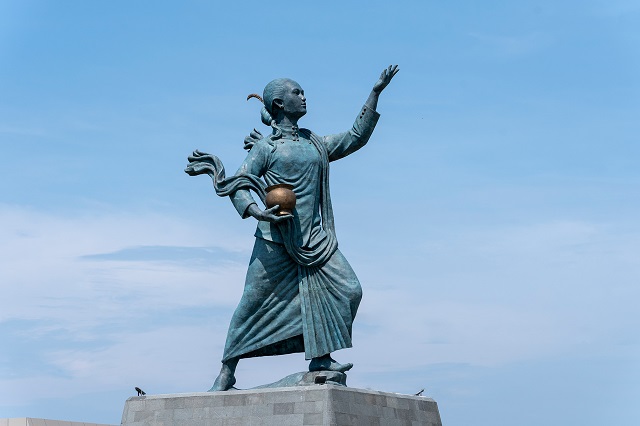
After passing Joglo Semar Tinanadu, look for a statue of Hamemayu Hayuningrat, a Javanese woman. This 15-meter-high statue depicts Mother Earth and represents life, fertility, and adherence to Javanese cultural ordinances.
The statue’s gestures appear to be walking with climbing footwork, illustrating the spirit of struggle to meet the new era. This statue’s Yogyakarta Princess dress represents a protective figure who is intelligent, authoritative, elegant, and tough. Meanwhile, the golden bowl in the right hand represents an expression of gratitude to God.
3. Gunungan
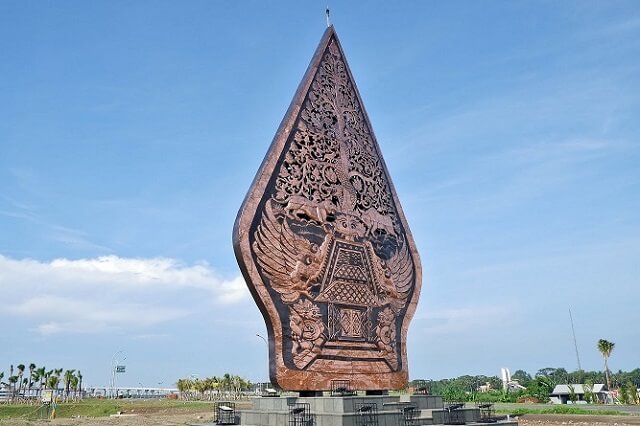
Following that, there is a massive Gunungan in the accessibility area. Gunungan is a part of the puppet that tapers upwards to represent human life. It means that everything in the world will eventually return “to the top,” and the more knowledge and age humans have, the closer they will be to God. There are also motifs or images in Gunungan that represent the universe and its contents, such as humans, animals, plants, and all their equipment.
4. Balekambang
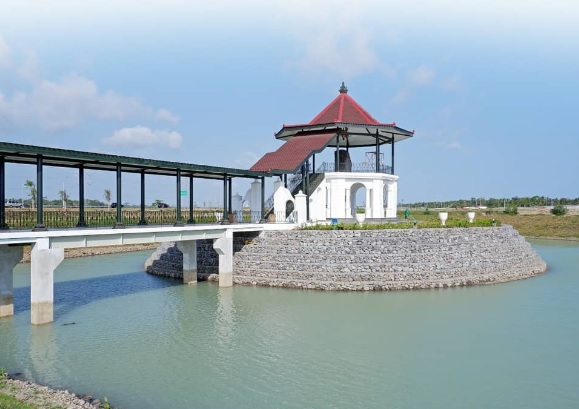
A Balekambang (floating hall) is a structure that floats above the water. Balekambang YIA is situated on a large artificial lake. There are two buildings, one on each side of the street. On the east side, there is an inscription from Mount Merapi’s stone with the Ancestral Words predicting the existence of an airport in Kulon Progo. On the west side, an inscription from Mount Merapi’s stone contains the Yogyakarta Governor’s concept of the Yogyakarta Renaissance.
You must first park your vehicle in the parking area before crossing the road to Balekambang YIA.
5. Plengkung Gading
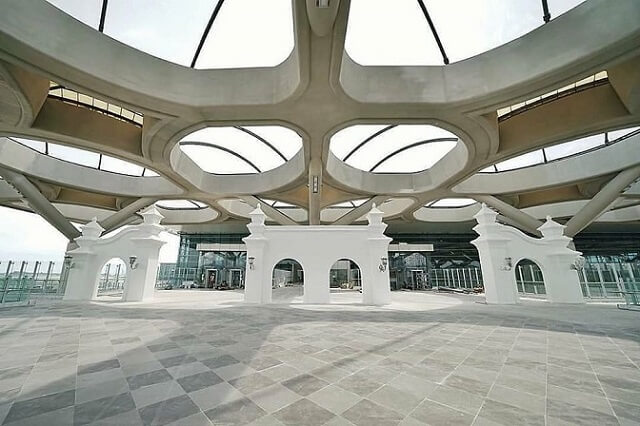
Plengkung Gading is a white gate with a curved shape. Plengkung Gading in YIA was inspired by the Plengkung Gading building, which is located south of the Yogyakarta Palace, about 300 meters from Yogyakarta’s South Square. Plengkung Gading is a gate that leads into and out of the Yogyakarta Palace.
6. Kawung Roof (Special Lighting)
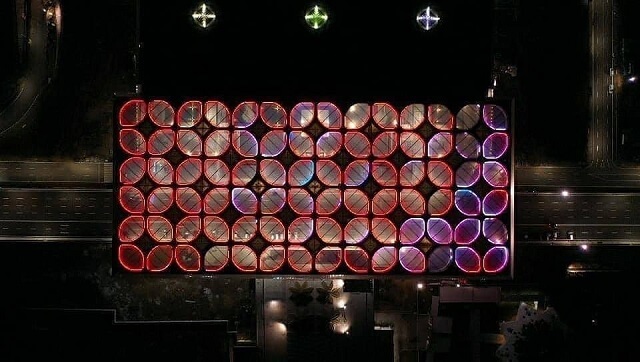
Those of you who have traveled through YIA must be aware of this. If you look at the YIA terminal after taking off or before landing, you will notice the kawung batik motif. A gunungan motif can also be found in the accessibility area, as well as a jasmine flower motif on the roof of the connecting building.
Departure Area – Yogyakarta International Airport Icons
7. Gumuk Pasir (Sand Dunes)
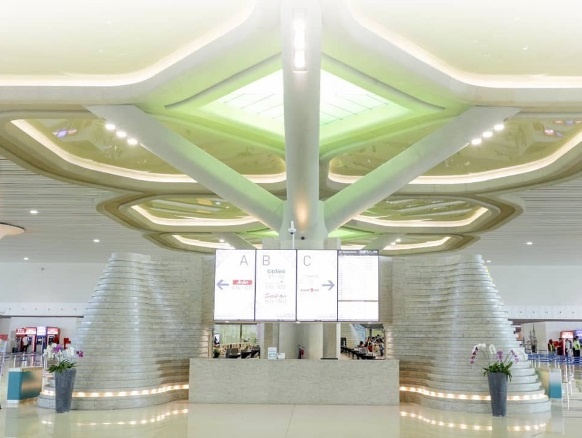
Gumuk Pasir is a tourist attraction in Yogyakarta that inspired the interior design of YIA. The YIA Sand Dunes are located in the check-in area, and they describe the natural phenomenon of sand dunes on the coasts of Parangtritis Beach and Parangkusumo Beach. The phenomenon of sand dunes is depicted through the use of ceramics and carpets with South Sea coast nuances.
8. Bedhaya Kinjeng Wesi Dance
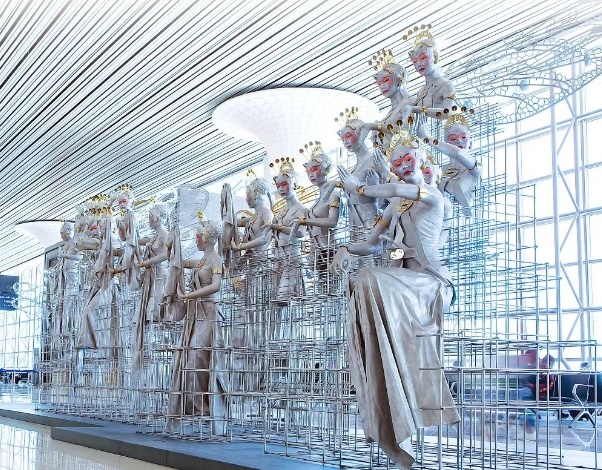
When you enter the departure waiting room, you will notice a statue of the Bedhaya Kinjeng Wesi Dance. Ichwan Noor created the Bedhaya Kinjeng Wesi dance sculpture. Symbolizing aircraft movement and visualizing the dance movements of Bedhaya Kinjeng Wesi, the iconic dance of Yogyakarta International Airport. The meaning of the Bedhaya Kinjeng Wesi dance is that humans are a part of the universe (macro cosmos) and that there is a working system of the universe within humans themselves (microcosmos).
9. Jogja On the Move
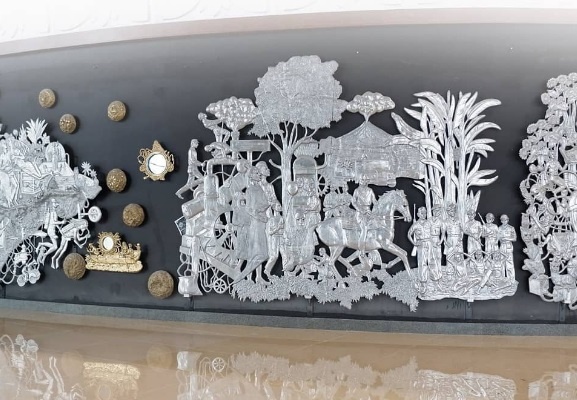
There is also the Jogja On The Move relief artwork, which can be found in the domestic and international departure areas. Artist Entang Wiharso created this relief. Tells the story of Yogyakarta’s journey and physical development, culture, and way of life. This relief measures 4 meters high and 20 meters wide in total. The “Jogja Renaissance” (the birth of a new civilization created through the acculturation of traditional and modern cultures) is the main concept of artwork at YIA.
10. Among Bocah
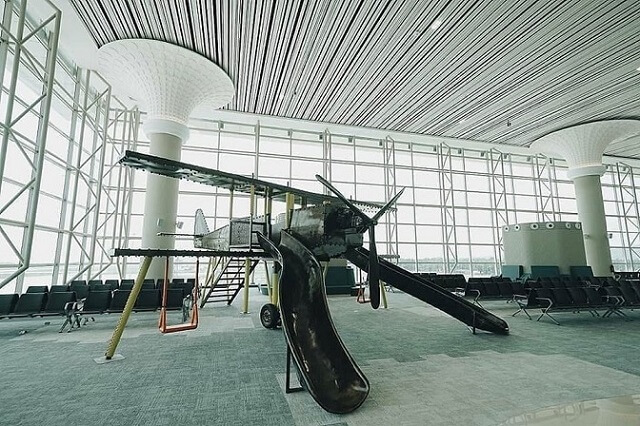
Among Bocah is a game that also serves as an educational and cultural introduction for children. There are traditional swings and slides in the shape of a dragonfly plane. Lutse Lambert D. Morin collaborated with artists Kotagede and Boyolali to create this piece. Made of inlaid brass metal and mixed media. It measures 6x4x2.5 meters in size.
11. Hastabrata
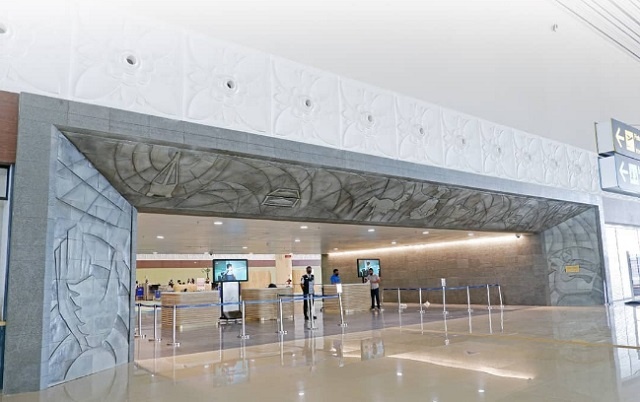
You will pass through a stone relief gate depicting a story about a Javanese leadership principle known as Hastabrata on your way to YIA’s Security Check Point. Manawa Dharma Sastra, a Hindu Sanskrit book, inspired the term “Hastabrata.” This means that the royal leader acts in accordance with the gods’ personalities, namely Bantolo (Earth), Suryo (Sun), Kartiko (Star), Condro (Moon), Samodra (sea), Tirto (water), Maruto (wind), and Agni ( fire).
12. Panca Wiwara
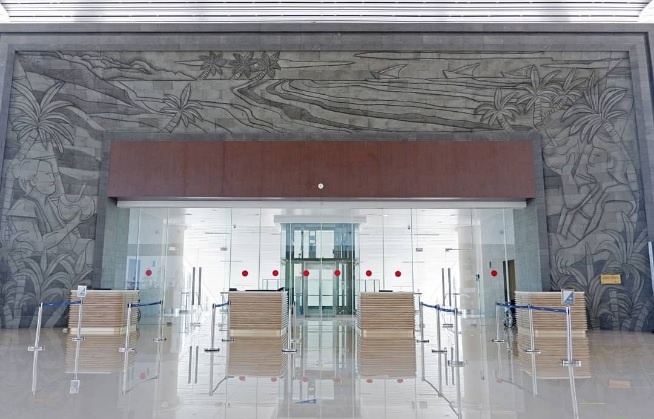
Panca Wiwara is a stone carving at the departure gate for international and domestic passengers as a gesture of gratitude from PT Angkasa Pura I to the residents of five villages in Kulon Progo that were displaced by the construction of YIA. Palihan, Glagah, Kebonrejo, Sindutan, and Jangkaran are the five villages. Yoga Budi Winarto and the artist Muntilan created this 9×13.5 meter stone carving.
Artwork on the Mezzanine Floor
One of the icons of Yogyakarta International Airport is the mezzanine floor artwork zone. The Mezzanine floor, also known as the middle floor, is an additional floor located between the first and second floors of the YIA passenger terminal. There is artwork here that was created as a form of appreciation and respect for the five villages that were destroyed as a result of the YIA development. Jangkaran, Sindutan, Palihan, Kebonrejo, and Glagah are the five villages. Panca Desa refers to these five works of art.
13. Jangkaran Artwork
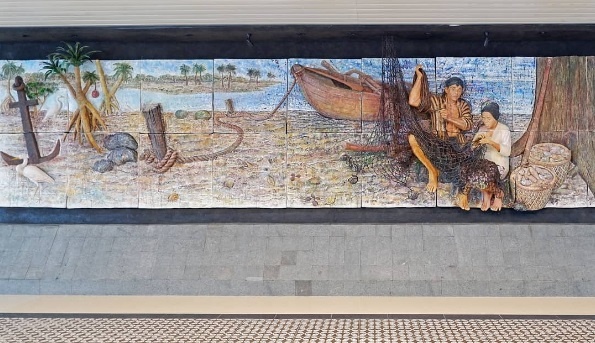
This artwork depicts the history of Jangkaran Village through the eyes of a husband and wife who have moved to a new location (the forerunners of the residents of Jangkaran Village). They are revered elders known as Kyai and Nyai Jangkar. Wilman Syahnur created this 10×4 meter work of art.
14. Sindutan Artwork
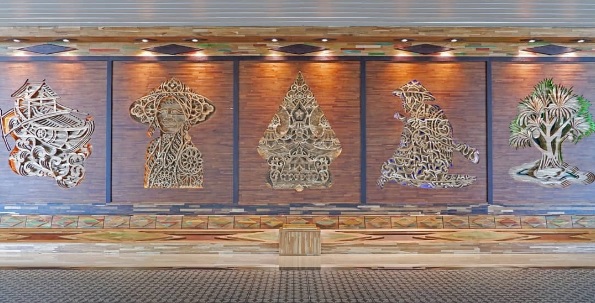
Fajar Andrian created Sindutan Artwork with recycled wood material and colorful lighting. This relief depicts the lives of Sindutan, the majority of whom are fishermen. Sindutan village is represented by a gunungan puppet as a link between regions and as a symbol of Mount Lanang.
15. Palihan Artwork
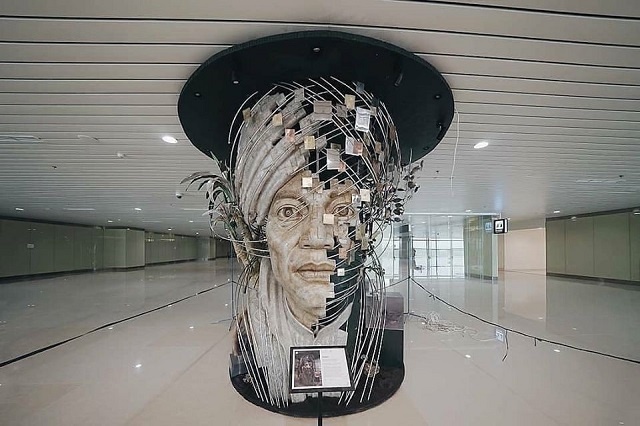
Palihan Artwork can be found on the mezzanine floor for domestic arrivals to the east. Duvrat Angelo and Lulus Setio Wantono created this piece. Palihan’s artwork depicts a hereditary story about Prince Diponegoro’s troops stopping at Palihan Village during the Java War.
16. Kebonrejo Artwork
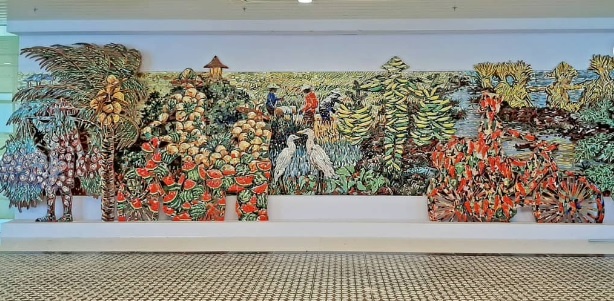
The Kebonrejo artwork depicts the lives of the Kebonrejo Village residents, the majority of whom are farmers. Budi Kustarto created the Kebonrejo artwork using recycled materials such as leftover ceramic shards of various colors.
17. Glagah Artwork
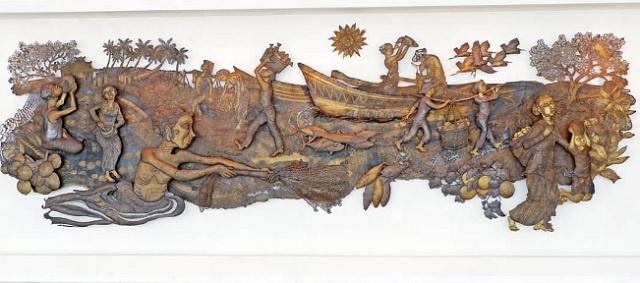
The word “Glagah” equates to “sugarcane flower.” Glagah was named after the Glagah Beach area in Kulon Progo, where there used to be a lot of sugar cane. Metal is used in Glagah’s artwork. It describes the lives of the residents, the majority of whom are fishermen.
18. Babad Alas
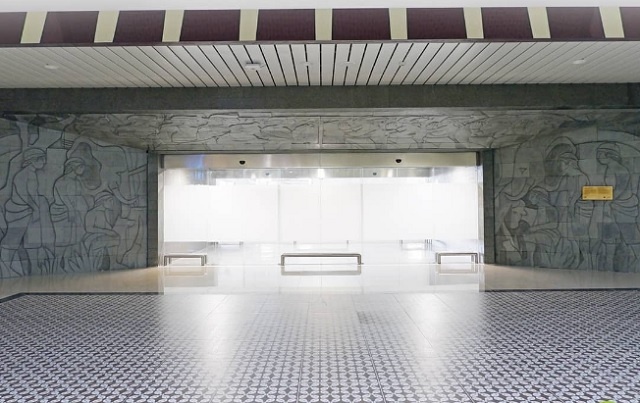
Babad Alas relates to “tree cutting in the forest.” This is one of the ancestors’ traditions for establishing a new settlement. The Babad Alas Artwork tells the story of the birth of a new civilization in Java’s history, with the Babad Alas Mentaok representing the birth of Mataram, the Babad Alas Pabring representing the birth of Yogyakarta, and the Babad Alas Nawung Kridha representing the birth of the Modern Mataram civilization. Yoga Budi Winarto and artist Muntilan created the artwork Babad Alas in the form of andesite stone carvings on the arrival gate’s mezzanine floor.
19. Among Tani Dagang Layar
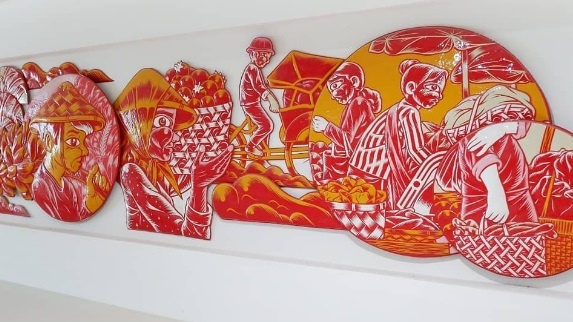
In addition to the Panca Desa artwork, there are also Babad Alas and Among Tani Dagang Layar on the mezzanine floor of the domestic and international arrivals area. This Among Tani Dagang Layar artwork depicts the daily lives of YIA residents.
That is the artwork and the typical Yogyakarta building that have become the icons of Yogyakarta International Airport. It’s all great. Please come to YIA to see these amazing artworks in person.
ALSO READ:

Leave a Reply